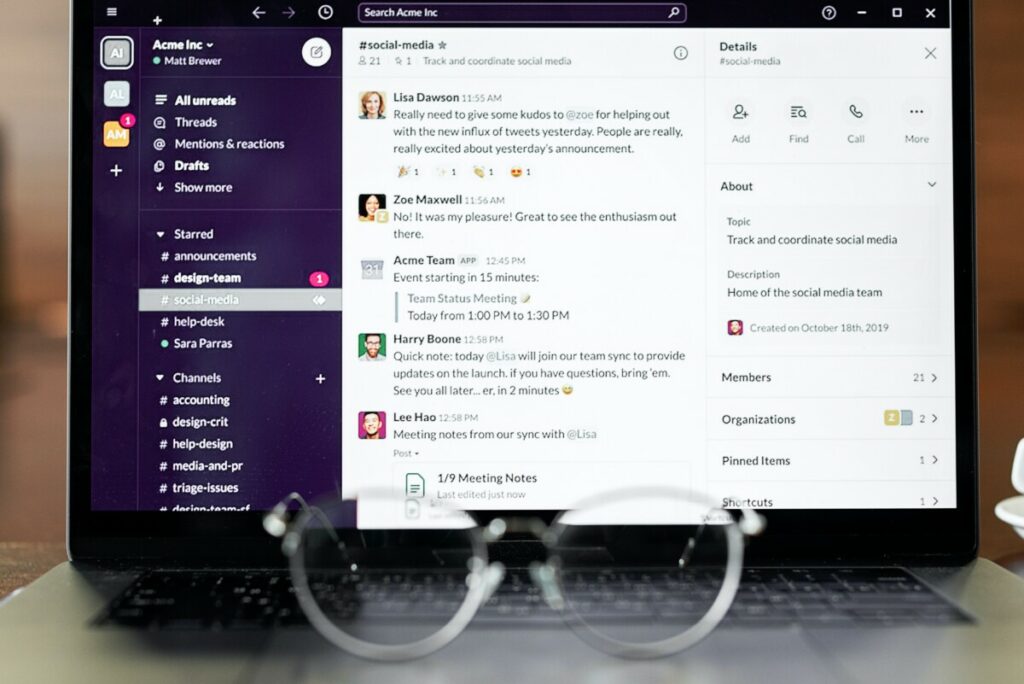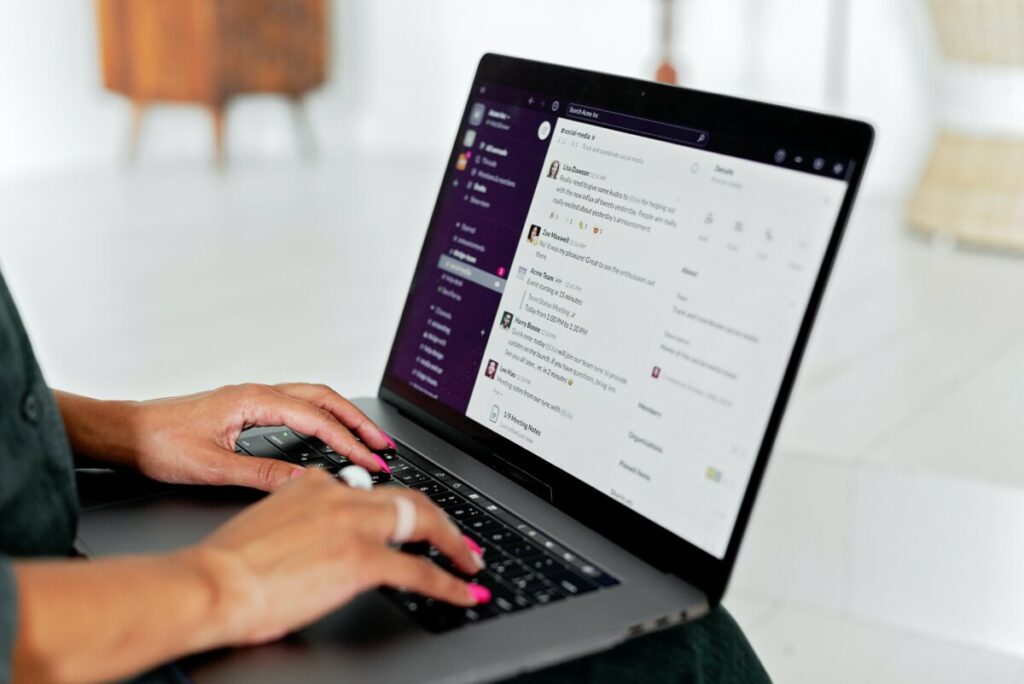As nonprofit organizations grow and evolve, so do their communication needs. In a world where teams are increasingly distributed and collaboration is paramount, having the right tools in place can make a world of difference. Enter Slack, the communication platform that has transformed how businesses, and now nonprofits, collaborate and communicate. Therefore, our main focus today will be on Slack for nonprofits. Let’s dive in.

What is Slack?
Slack is an innovative communication tool widely used within organizations across various industries including top-tier Fortune 500 companies. A modern alternative to conventional E-mail conversations, it consists of several digital spaces referred to as ‘channels’ where team members can communicate, share files, assign and delegate tasks, and collaborate on shared documents all while keeping everything orderly and easily retrievable.
Mainstream alternatives like Doodle or Oncehub are often seen competing in similar niches but when it comes to usability and reliability, Slack is largely favored by industry professionals.
Why Slack?
Slack, initially developed for corporate teams, has a user-friendly interface that allows for real-time messaging, file sharing, and collaboration. Nonprofits, with their unique challenges and dynamics, can benefit immensely from the features Slack offers.
Benefits of Using Slack for Nonprofits
- Centralized Communication: Slack eliminates the need to juggle between emails, texts, and various apps. Everything happens in one place.
- Integrated File Sharing: Easily share documents, images, and other files directly in your conversations.
- Searchable History: Find past conversations, decisions, and shared files effortlessly.
- Integrations: Slack connects with over 2000 apps, including popular nonprofit tools like Donorbox and Trello.
- Channels: Create specific channels for different projects, departments, or even events. It’s a structured way to keep everyone informed.
A Deeper Dive: Using Slack Effectively in a Nonprofit Setting
The inherent benefits of Slack become amplified when tailored to a nonprofit’s specific needs.
Fundraising and Donor Management
- Donor Engagement: Set up a channel dedicated to donor communication. Share success stories, and updates, and engage your donors regularly.
- Integration with CRM: With tools like Salesforce, you can integrate donor data into Slack. This ensures that key team members have real-time access to crucial information.
- Event Planning: Organize fundraising events by setting up event-specific channels. Discuss logistics, share promotional materials, and monitor the event’s progress.
Volunteer Coordination
- Volunteer Onboarding: Use Slack to train and integrate new volunteers. Share necessary materials, and schedules, and address queries in a dedicated channel.
- Scheduling and Shifts: Slack integrations like Zapier can connect with scheduling tools to notify volunteers about their shifts.
- Feedback Loop: Create a space where volunteers can share their experiences, giving valuable insights into on-ground realities.
Project Management
- Collaboration: Slack makes it easy for different departments to come together, discuss, and align on various projects.
- Task Tracking: With Trello integration, track the progress of different tasks and keep the team updated.
- Resource Sharing: Share necessary resources, documents, and updates within project-specific channels, ensuring everyone stays in the loop.
Setting Up Slack for Nonprofit

Let’s move on to see how to set up Slack so you may start reaping its incredible benefits:
- Create an account
- Set-up Channels – It’s recommended to create separate channels for each department/meeting type to keep things assorted & orderly
- Invite Members– Ensure everyone is onboarded efficiently providing them an appropriate walkthrough about platform functionalities (Channels, @mentions, integrations)
- Import other Tools– You should definitely connect to file-sharing apps (Google Drive/Dropbox) and CRM software (Salesforce/ Zendesk)
Best Practices for Nonprofits Using Slack
Slack is a powerful tool, but like any platform, you maximize its effectiveness by how you use it. Discover best practices tailored for nonprofits:
- Set Clear Guidelines: Establish clear guidelines on Slack usage. This ensures professional communication and minimizes potential misuse.
- Regularly Archive Old Channels: To keep Slack organized, archive channels that are no longer active or relevant.
- Use Slackbots: Automate routine tasks like reminders, feedback collection, or even donor thank-yous with Slackbot.
- Limit Notifications: Ensure team members are not overwhelmed with unnecessary notifications. Use the ‘@’ mention judiciously and encourage members to mute channels that aren’t immediately relevant.
- Regular Training: As your nonprofit grows and evolves, continuously train members on Slack’s best usage.
Cost Considerations
A crucial factor for any nonprofit is the cost. The good news is that Slack offers a generous discount for eligible nonprofits. It’s an investment in streamlined communication that can lead to increased efficiency, and in the long run, a higher impact.
Conclusion
In the digital age, nonprofits cannot afford to lag in their communication strategies. Slack, with its myriad of features and integrations, offers an unparalleled platform for nonprofits to collaborate, innovate, and grow. By understanding its potential and implementing best practices, nonprofits can harness Slack to revolutionize their communication and amplify their impact.
EXPLORE MORE: 6 Essential Apps for Managers in 2023









